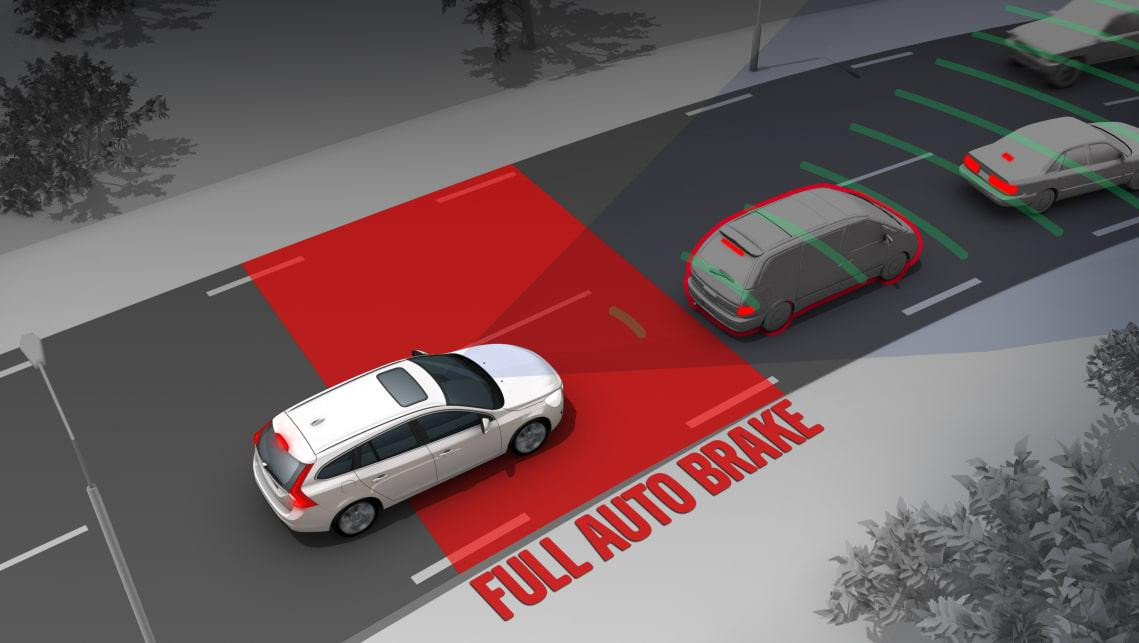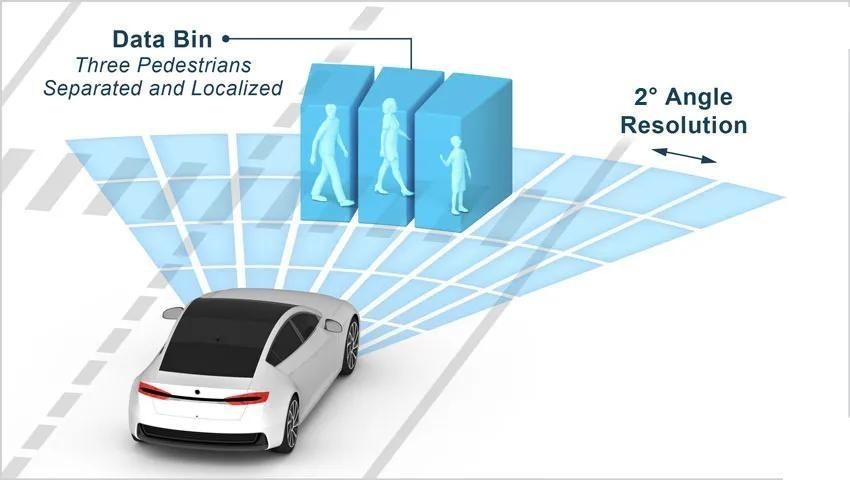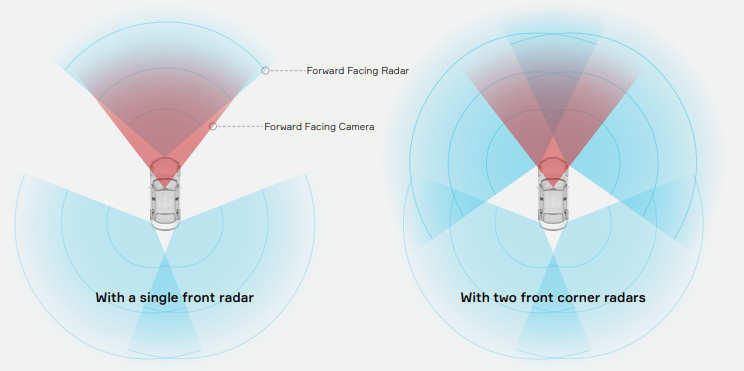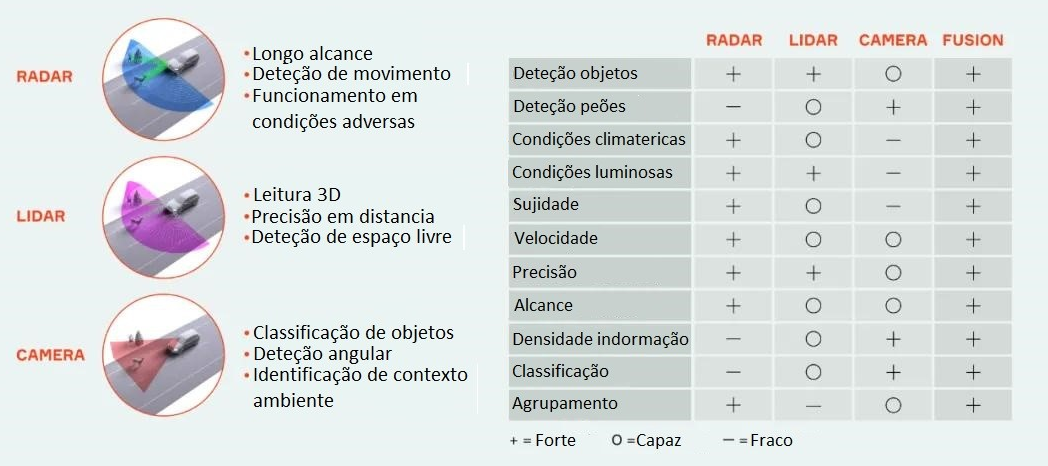Welcome to LD Auto - Maintenance and repair of multi-brand vehicles
In this article, we will briefly discuss the difference between safety systems found in vehicles and their classification, giving more relevance to active safety systems and ADAS systems. It will also explain the function of some systems that can be found in current vehicles and their main sensors and characteristics.
Current vehicles have increasingly developed and numerous driving assistance systems, and automobile manufacturers have made a significant investment in the development of vehicle safety systems available in the market.
Automotive safety systems can be divided into two main classes, active safety systems and passive safety systems.
Passive SafetyAll systems that aim to minimize damage and protect vehicle occupants in the event of an accident. Examples of passive safety include seat belts, airbags, headrests, or, for example, helmets and gloves when used, or zones of deformation and energy absorption that are part of the vehicle chassis.
Active SafetyAll systems that aim to prevent accidents from happening.
In addition to the development of vehicles focusing on energy efficiency and emissions reduction, the automotive industry has always attached great importance to increasing road safety, which has always been a strong commercial argument. Many of us remember systems such as ABS or traction control being additional equipment; today, as extras, we find intelligent lighting systems and almost autonomous driving systems in some vehicles.
As a result of the development of active safety systems, a new subgroup emerged, ADAS (Advanced Driver Assistance Systems). These systems are characterized by the use of additional and more advanced sensors, such as multiple types of radar, cameras, and ultrasonic sensors. The information from these systems is processed and used to assist and protect the driver in various situations.
Sometimes, for the same ADAS safety system, manufacturers use different acronyms, and with the increasing number of safety systems, it is not always easy to assess the safety characteristics of a vehicle.
Main Systems Found in Current VehiclesBelow are some of the main systems found in current vehicles and their main functional objectives.
Forward Collision Warning: Detects the imminent possibility of collision when the vehicle is in motion and alerts the driver. Depending on the system, the alert can be given in the form of an audible warning when there is a risk of collision with another vehicle, pedestrian, or object.
AEBAutomatic Emergency Braking: This system complements the previous one; in addition to the collision warning, the system automatically activates the vehicle's brakes to avoid the accident or at least reduce its consequences.

Figure 1 - AEB Systems
City Automatic Emergency Braking: The system uses the same sensors and actuators as AEB; however, it is more limited, operating only at low speeds.
HAEBHigh-Speed Automatic Emergency Braking: The system uses the same sensors and actuators as AEB; however, it only operates at high speeds typical of highway traffic. The system only slows down the vehicle; for safety reasons, the brakes are never applied to stall the vehicle.
PDPedestrian Detection: The system is capable of detecting pedestrians and alerting the driver, usually in the form of an audible warning. Some systems may include automatic braking and detection of cyclists.

Figure 2 - PD System
LDW
Lane Departure Warning: Monitors the vehicle's position on the road lane and alerts the driver if it approaches or crosses the lane boundaries.
LKA
Lane Keeping Assistance: It is a system that evolved from the previous one (LDW); in addition to monitoring the vehicle's position on the road lane, it automatically corrects the direction if the vehicle approaches or crosses the lane boundaries.
BSW
Blind Spot Warning: Detects the presence of vehicles traveling in the adjacent lane that are not visible through the side mirrors. It usually activates a light warning in the side mirror on the side where the adjacent vehicle is traveling.
RAEB
Rear Automatic Emergency Braking: Functions similarly to AEB but when the vehicle is moving backward.
LCA
Lane Centering Assistance: The system can control the steering wheel/direction and automatically follow the road lane.
ACC
Adaptive Cruise Control: The system can control the vehicle's speed to maintain a predefined distance from the vehicle ahead.

Figure 3 - Vehicle Surroundings Reading
There are many other ADAS systems such as driver fatigue detection, traffic sign recognition, intelligent lighting systems, and night vision, parking assistance, among others.
Although ADAS systems are technically very complex, their concept is relatively simple to understand.
Through the various vehicle sensors, the system tries to create an image or map of the surrounding area, not only of vehicles but also pedestrians, cyclists, traffic signs, crosswalks, and other obstacles. It reads all the information and takes actions to prevent accidents.
In order to continually improve these systems, it will be necessary to have an increasingly better map of the vehicle's surrounding space, as outlined in Figure 1.
In addition to the coverage area and reading angle, since these are safety systems, their accuracy, robustness, and reliability in the highest number of possible operating conditions are extremely important.
ADAS systems use, in addition to the vehicle's other sensors, three main additional types of sensors: Radar, Lidar (a sensor similar to radar but emits light waves and captures their reflection), and Camera.
There are no perfect sensors for all situations that meet all the necessary requirements in any type of environment or scenario. To build a more capable system globally, "Sensor Fusion" is performed, i.e., the system uses information from multiple sensors for the same specific measurement, taking advantage of each one's strengths, thus obtaining more reliable information. Figure 2 presents a summary table showing the strengths and weaknesses of each type of sensor in each type of reading and/or condition.

Figure 4 - Sensor Fusion - ADAS
ADAS systems have been in the market for several years and are increasingly common, being found in vehicles of any segment. From 2022 onwards, all new vehicles launched in the European market will have ADAS systems.
ADAS systems bring yet another challenge to the aftermarket sector. Some operations that were simple until now will now require the ADAS system to be calibrated in order to ensure correct operation in all situations of these safety systems.
System sensors need to be replaced due to damage or malfunctions;
Body repairs or disassembly of panels where the main system sensors are mounted;
Grilles or bumpers need to be replaced;
Tires are replaced;
Wheel alignments are performed;
Windshields are replaced.
LD Auto recommends that calibrations of ADAS systems be carried out by repairers trained to perform the operation and equipped with certified equipment, in order to respect all manufacturer procedures and tolerances.







